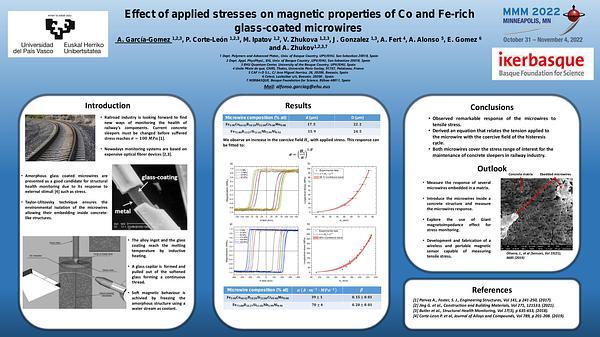Would you like to see your presentation here, made available to a global audience of researchers?
Add your own presentation or have us affordably record your next conference.
Transcranial magnetic stimulation (TMS) is a safe, effective and non-invasive treatment for several psychiatric and neurological disorders. TMS is FDA approved treatment for depression and obsessive-compulsive disorders 1–3. Lately, there has been a research surge in utilizing this novel technology in treating other neurological and psychiatric ailments. The application of TMS on other several neurological disorders requires the magnetic flux density and electrical field to be focal and targeted to a small region in the brain 4. Multiple coil designs have been introduced in the literature to improve the focality of TMS coils, whereas, slight few numbers of these designs have adapted soft magnetic materials as coil cores to focus the magnetic flux. In this study, several soft magnetic materials will be investigated as TMS coil cores both in Finite Element Simulations and experimentally on rat head model.
Finite element analysis of the rat head model will be done using Sim4life while investigating variations associated with changing the coil core material. In addition to investigate the effect of adding a V- shape tip to the core with 2 different angels 60 and 120 degrees 5. Materials proposed for the analysis in this study include but not limited to Iron Cobalt Vanadium alloy (FeCoV), AISI 1010 Carbon Steel and Manganese Zinc ferrites (MnZn). Magnetic Properties of these materials will be characterized using Physical Property Measurement System (PPMS) to ensure using accurate magnetic properties in our simulations.
Simulation results are presented below in (Fig. 2), indicating significant E-Field distribution variation when introducing a ferromagnetic core in TMS coil, concentrating the E-Field to the targeted region in rat head model without stimulating adjacent regions. It was observed that the relative permeability of the core material affects the focality of the stimulation significantly.
Acknowledgment: Authors acknowledge Commonwealth Cyber Initiative Central Virginia Node Grant # FP00010500.
References:
1 M. S. George et al. Arch. Gen. Psychiatry, vol. 67, no. 5, pp. 507–516, May 2010
2 D. W. Dodick, C. T. Schembri, M. Helmuth, and S. K. Aurora Headache J. Head Face Pain, vol. 50, no. 7, pp. 1153–1163, Jul. 2010
3 O. of the Commissioner, FDA, Mar. 24, 2020.
4 J. Selvaraj, P. Rastogi, N. Prabhu Gaunkar, R. L. Hadimani, and M. Mina IEEE Trans. Magn., vol. 54, no. 11, pp. 1–5, Nov. 2018
5 I. C. Carmona, D. Kumbhare, M. S. Baron, and R. L. Hadimani, AIP Adv., vol. 11, no. 2, p. 025210, Feb. 2021

Figure 1: TMS coil postion on rat head model.

Figure 2: E-Field distribution simulation results. Left: E-Field distribution without ferromagnetic core. Right: E-Field distribution including a ferromagnetic core.
